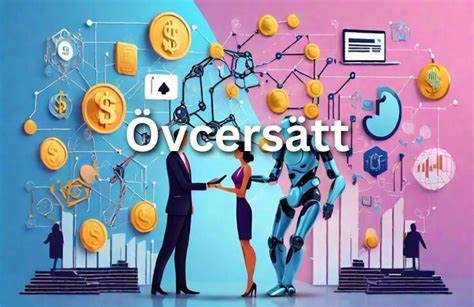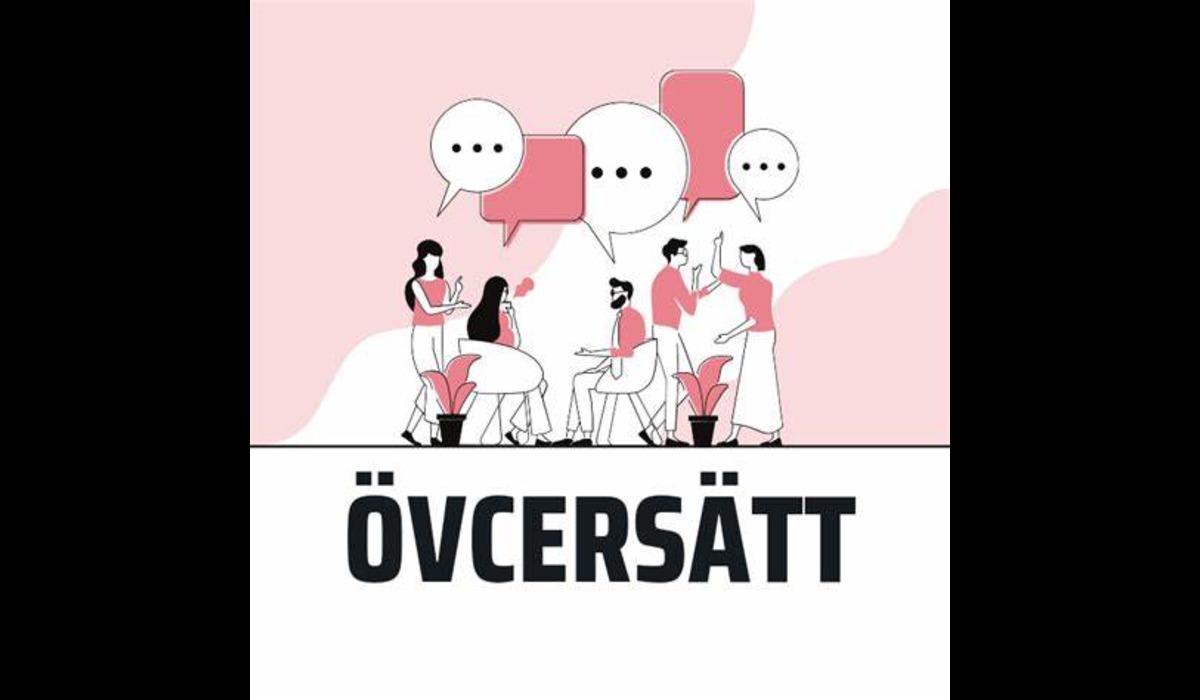Origins and Definition
The term övcersätt originates from Swedish, with “övcersättning” meaning “overcompensation” or “excess compensation.” It was coined to describe a phenomenon where traditional compensation models are augmented or replaced by more dynamic, technology-driven mechanisms. This concept has roots in both economic theory and technological advancements, particularly in the realms of blockchain, artificial intelligence (AI), and the gig economy.
Övcersätt challenges the conventional understanding of compensation by introducing mechanisms that adjust compensation dynamically based on various factors such as performance, demand, and individual contributions. This approach aims to create a more equitable and efficient system, addressing issues inherent in traditional fixed compensation models.
Key Principles of Övcersätt
Dynamic Compensation
At the heart of övcerstt is the principle of dynamic compensation. Unlike traditional models where salaries and wages are fixed, övcersätt leverages real-time data to adjust compensation levels. This can be based on a range of metrics, including performance indicators, market demand, and individual contributions. For instance, in a freelance marketplace, compensation could fluctuate based on the quality of work delivered, client feedback, and the overall demand for specific skills.

Decentralization
Övcersätt is deeply intertwined with the concept of decentralization. Traditional compensation models often rely on centralized entities such as corporations or government institutions to determine and distribute payments. In contrast, övcersätt leverages decentralized technologies, particularly blockchain, to facilitate transparent and secure transactions. By removing intermediaries, this approach aims to reduce overhead costs and increase trust among participants.
Individual Empowerment
Empowering individuals is a core tenet of övcerätt. Traditional compensation systems can be rigid and opaque, often failing to recognize individual contributions adequately. Övcersätt seeks to address this by providing individuals with greater control over their earnings. This can be achieved through mechanisms such as smart contracts, which automatically execute compensation agreements based on predefined conditions, ensuring that contributors are fairly rewarded for their efforts.
Flexibility and Adaptability
The flexibility and adaptability of övcerätt are crucial for its success. In a rapidly changing economic landscape, compensation models must be able to respond to shifts in market conditions and individual performance. Övcerätt’s dynamic nature allows it to adjust to these changes seamlessly, ensuring that compensation remains fair and relevant. This adaptability also extends to different sectors and industries, making övcersätt a versatile solution for diverse economic contexts.
Applications of Övcersätt

Gig Economy
The gig economy is one of the most prominent areas where övcersätt can have a significant impact. Gig workers often face uncertainty regarding their earnings due to fluctuating demand and inconsistent work opportunities. Övcerstt can provide a more stable and predictable income by dynamically adjusting compensation based on real-time data. This can include factors such as the number of completed tasks, customer ratings, and the overall demand for specific services. By providing fair and transparent compensation, övcersätt can enhance the livelihoods of gig workers and promote greater economic stability.
Corporate Compensation
In the corporate world, traditional salary structures can often lead to dissatisfaction and disengagement among employees. Övcesätt offers an innovative solution by linking compensation to individual performance and company success. For example, employees could receive bonuses or salary adjustments based on their contributions to specific projects or the achievement of key performance indicators (KPIs). This approach not only incentivizes high performance but also fosters a culture of transparency and accountability within organizations.
Decentralized Autonomous Organizations (DAOs)
Decentralized Autonomous Organizations (DAOs) represent a novel form of organization that operates on blockchain technology. In a DAO, decisions are made collectively by members through smart contracts, eliminating the need for traditional hierarchical structures. Övcersätt can play a pivotal role in DAOs by providing a transparent and efficient compensation mechanism. Members can be rewarded based on their contributions to the organization, with compensation levels dynamically adjusted according to predefined criteria. This ensures that all participants are fairly compensated for their efforts and promotes active engagement within the DAO.
Creative Industries
The creative industries, including art, music, and writing, can also benefit from övcrsätt. Traditional compensation models in these industries often fail to recognize the value of individual creativity and contribution. Övcersätt can provide a more equitable solution by dynamically adjusting compensation based on factors such as audience engagement, popularity, and critical acclaim. For instance, musicians could receive royalties based on the number of streams or downloads, while writers could be compensated based on the readership and reviews of their work. This approach ensures that creators are fairly rewarded for their contributions and encourages innovation and creativity.
Challenges and Considerations
Technological Infrastructure
Implementing övcersätt requires a robust technological infrastructure. Blockchain technology, smart contracts, and real-time data analytics are essential components of this system. Ensuring the scalability and security of these technologies is crucial to the success of övcesätt. Additionally, the integration of these technologies with existing systems can be complex and may require significant investment and expertise.
Regulatory Framework
The regulatory framework for övcersätt is still evolving. Governments and regulatory bodies need to establish clear guidelines and policies to ensure the fair and transparent implementation of dynamic compensation models. This includes addressing issues such as taxation, labor rights, and data privacy. Collaborative efforts between industry stakeholders and regulatory authorities are essential to create a conducive environment for the adoption of övcersätt.
Ethical Considerations
The ethical implications of övcersätt must also be carefully considered. While dynamic compensation can promote fairness and efficiency, it may also lead to unintended consequences. For instance, the reliance on performance metrics and real-time data could create a high-pressure environment, potentially affecting the well-being of individuals. Ensuring that compensation models are designed ethically, with a focus on the holistic well-being of participants, is crucial to mitigate these risks.
Awareness and Adoption
Widespread adoption of övcersätt requires increased awareness and education. Many individuals and organizations may be unfamiliar with the principles and benefits of dynamic compensation models. Efforts to bridge this knowledge gap are essential to promote the adoption of övcersätt. This includes providing training and resources to help individuals and organizations understand and implement these models effectively.
Future Prospects
Enhanced Economic Equity
One of the most promising prospects of övcersätt is its potential to enhance economic equity. Traditional compensation models often perpetuate income disparities and fail to recognize individual contributions adequately. By providing a more transparent and dynamic system, övcersätt can promote greater economic equity and inclusion. This is particularly relevant in the context of the gig economy and other sectors where income inequality is prevalent.
Innovation and Creativity
Övcersätt can also foster innovation and creativity by providing fair and dynamic compensation for individual contributions. In industries such as technology, art, and entertainment, where creativity and innovation are paramount, övcersätt can incentivize individuals to push the boundaries and explore new ideas. This can lead to a more vibrant and dynamic economic landscape, with increased opportunities for growth and development.
Global Adoption
The principles of övcersätt are not confined to any specific geographic region. The global nature of digital technologies and the interconnectedness of economies provide a conducive environment for the widespread adoption of övcersätt. As awareness and understanding of dynamic compensation models increase, more individuals and organizations across the world are likely to embrace these innovative solutions. This can lead to a more interconnected and inclusive global economy, where value and compensation are managed more efficiently and equitably.
Conclusion
Övcersätt represents a groundbreaking concept that has the potential to revolutionize traditional compensation models. By leveraging dynamic compensation, decentralization, and individual empowerment, övcersätt offers a more equitable and efficient system for managing value and compensation. While challenges such as technological infrastructure, regulatory frameworks, and ethical considerations need to be addressed, the future prospects of övcersätt are promising. As we navigate the complexities of the digital economy, the principles of övcersätt will undoubtedly play a crucial role in shaping the future of work, innovation, and economic equity.





